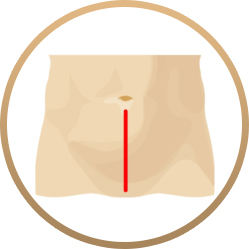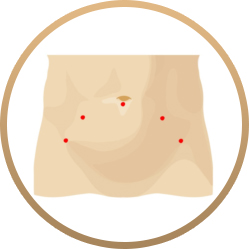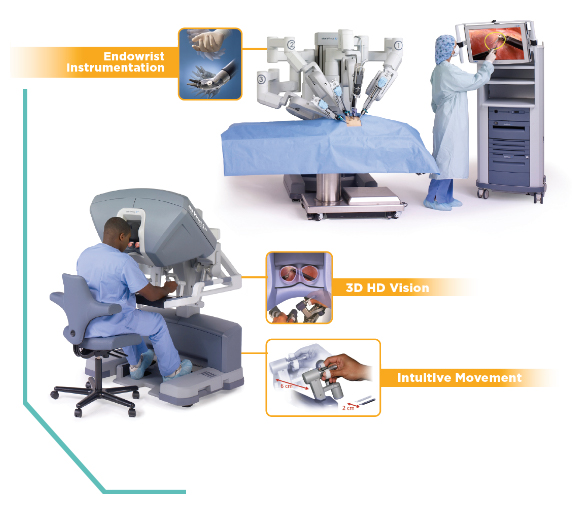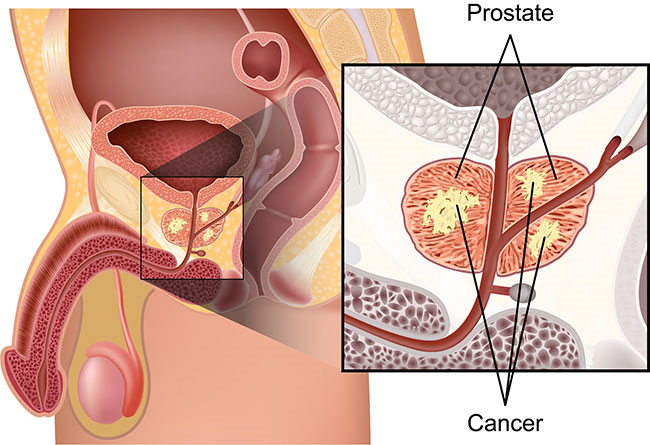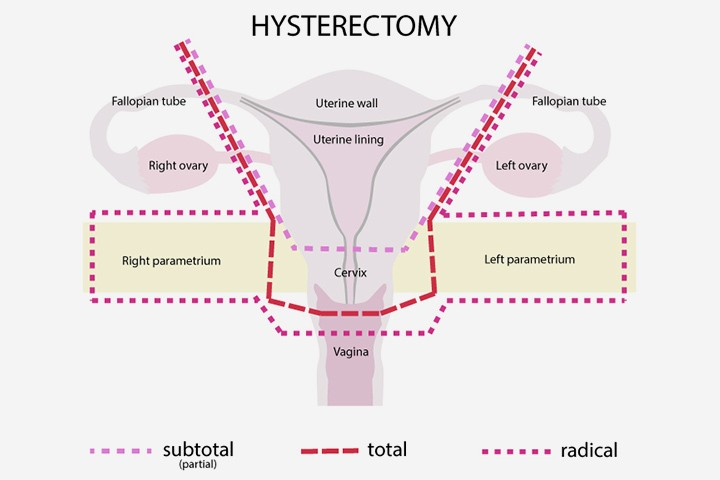Da Vinci Xi Surgical System
Sunway Medical Centre proudly offers patients the advanced technology of minimally invasive surgery with the da Vinci Xi Surgical System - the latest and first of its kind in Malaysia.
Powered by the state of the art technology, the da Vinci Xi Surgical System enables surgeons to perform complex and reconstructive surgery with tiny incisions, and enhance visualisation, precision and control.
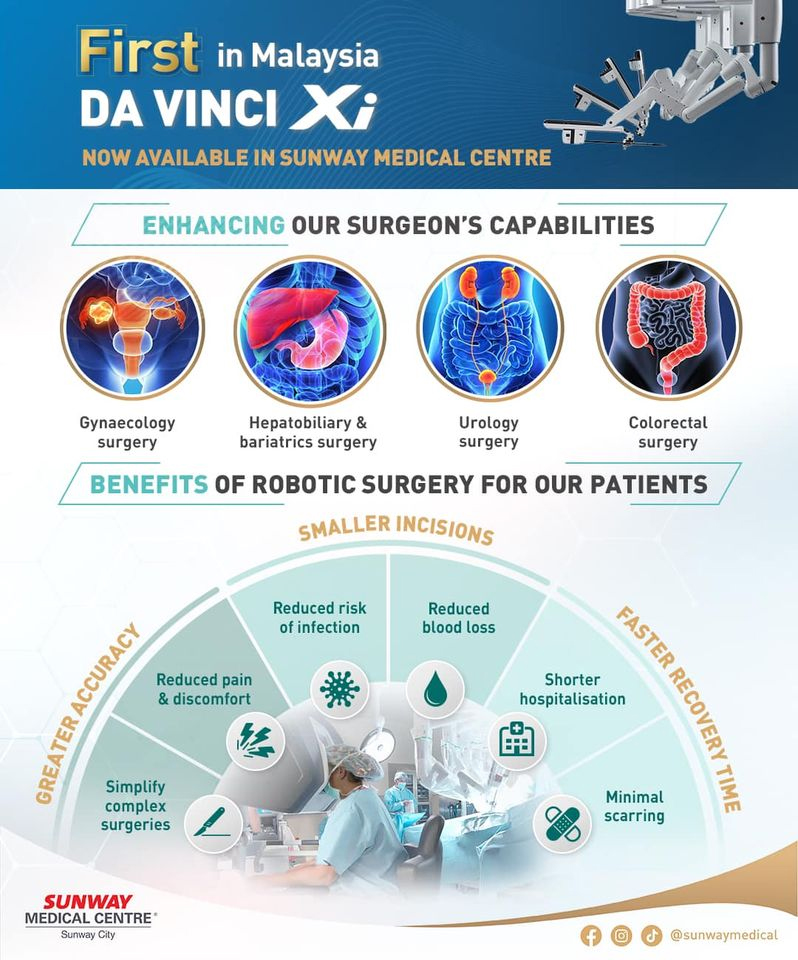
The da Vinci Surgical Robot
The da Vinci surgical system was first introduced in 1999 and received clearance by the FDA in 2000. It has evolved rapidly in terms of technology advancement and clinical application.
To date, over 4,000 da Vinci robotic surgical systems have been installed worldwide and more than 4 million surgeries were done robotically in the field of urology, gynaecology, cardiac thoracic, general surgery and pediatric surgery. The high adoption of this technology is due to its proven clinical benefits to patients and ease of use.
How The Da Vinci Surgical
Robot Works
The da Vinci Surgical System consists of an ergonomic surgeon console, a patient-side cart with four interactive arms,
a high-performance vision system and proprietary EndoWrist® instruments.
Endowrist Instrumentation
Provide surgeons with natural dexterity and range of movement far greater than the human hand
3D HD Vision
3-dimensional, enhanced high definition vision with 10 times magnification – offering surgeons an immersive view of the operation field
Intuitive Movement
The surgeon’s hand movements are scaled, filtered and seamlessly translated into robotic arms and instruments
Types of Surgeries Offered
Sunway Medical Centre has more than 10 surgeons with accreditation to perform robotic assisted surgeries in the following disciplines:

Urology Surgery
(Prostate, Kidney & Urology
reconstructive surgery)

Gynecology Surgery
(Uterus & fibroid removal surgery)

Colorectal Surgery
(Colon and rectal surgery)

Hepato-pancreatic
Biliary Surgery
(liver, pancreas, gall bladder and hernia surgery)



